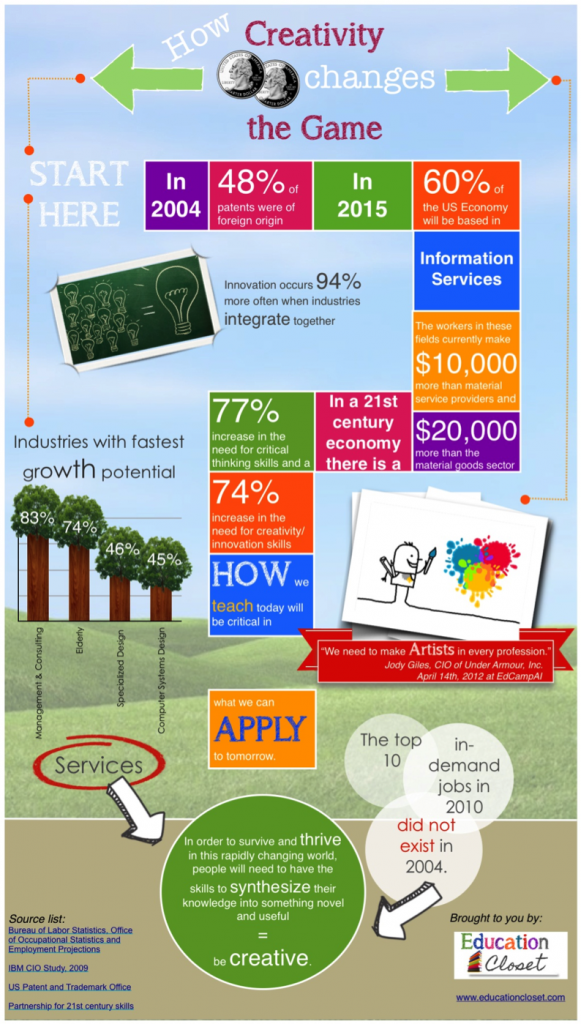Investing in Teaching Disruption
Americans are disrupters. Hell, our founding was based on disrupting a monarchy with the ancient lost form of government called a democratic republic. In fact, the economic and political institutions that democracy brought with it better allowed for disruptive innovation as dominant political and economic forces were more easily toppled as new ideas came along. Disruption is at America’s core–both philosophically and institutionally.
If you look at the major world disruptions since 1776, a stunning number of them are American, including the telegraph, telephone, airplanes, assembly line, nuclear weapons, and the Internet to name a few. This isn’t by accident – there is a cultural belief in disruption that is the cause of this.
At the core of this disruptive spirit is how we teach our children. The best disrupters are both creative and risk takers. These core characteristics are at the heart of the essence of some of our most famous and celebrated innovators including Steve Jobs, Bill Gates, Sergey Brin and Larry Page and Albert Einstein. They were not just brilliant scientists – they were also brilliant creative minds who were willing to take risks.
That is what makes this 2010 article, entitled “The Creativity Crisis” in Newsweek so disheartening. A study by Kyung Hee Kim at the College of William & Mary found that:
[C]reativity scores had been steadily rising, just like IQ scores, until 1990. Since then, creativity scores have consistently inched downward. “It’s very clear, and the decrease is very significant,” Kim says. It is the scores of younger children in America—from kindergarten through sixth grade—for whom the decline is “most serious.”
This is a scary development if we are going to produce the next generation of disrupters. We need to teach disruption. As we focus our educational resources more on making sure that math and science scores rise from our 2003 ranking of 25th, we need to make sure that we don’t lose sight of another core part of the American disruptive story – creativity.
This is something that is troubling to Tony Tijerino. Tony runs the Hispanic Heritage Foundation, an organization dedicated to the next generation of Latino leaders in our society. Any sincere student of what makes a good leader knows that creativity is at the cornerstone of leadership. Tony recently wrote a piece on Huffington Post entitled, “Imagine That…” which took a look at the burgeoning creativity crisis. Tony astutely observes:
I am a strong believer in the strong link between imagination, creativity and innovation. Innovation is an ubiquitous buzzword being used by opinion-leaders from the White House to Silicon Valley. According to the Lincoln Center, imagination is the capacity to visualize new possibilities; creativity is the engagement of the imagination to conceive, express, or produce something highly original; and innovation is the engagement of imagination and creativity to produce an advance in a field of activity.
As the U.S. focuses on innovation policy, a core part of that focus is Science, Technology, Engineering and Math Education, or STEM for short. A recent report by the White House Office of Science and Technology Policy, which was required by the 2010 reauthorization of the America Competes Act, noted that the Federal Government spends $3.53 billion on STEM educational efforts. This is a significant amount that I wholeheartedly support. However, it is unfortunate that the study also doesn’t look at the amount we spend on teaching and fostering creativity in the classroom as well. Because, without the latter, the former will produce the next generation of great scientists and engineers, but not the disruptive ones we need to keep America on top.
(Graphic courtesy of www.educationcloset.com)









